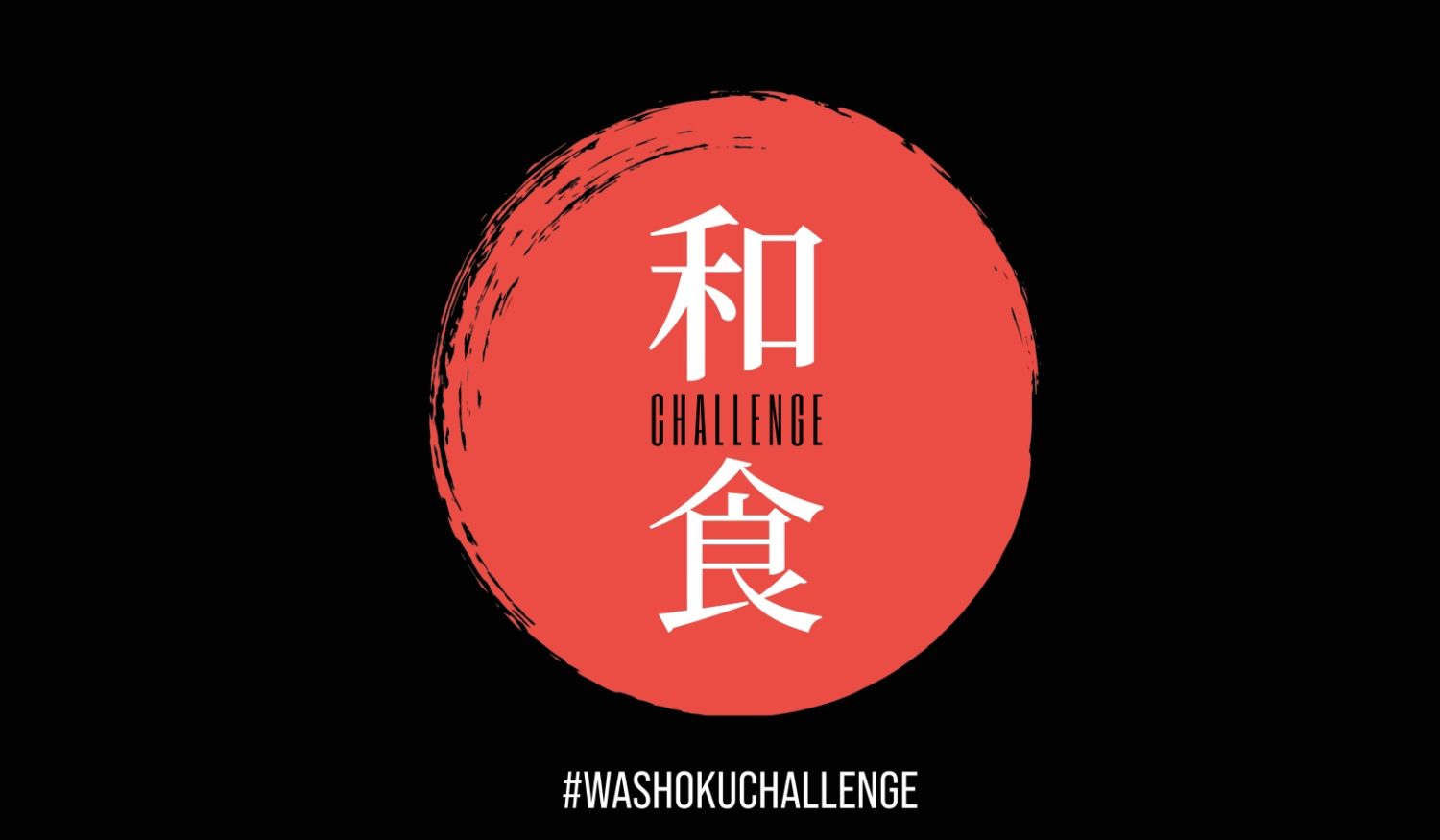
On December 4, 2013, “Washoku; traditional food culture of the Japanese” was registered on the UNESCO Intangible Cultural Heritage list.
Japan is blessed with a diverse and rich natural environment because it stretches from north to south and has four distinct seasons. Therefore, the food culture that was born there has been nurtured by these elements.
The quality of water in Japan is the finest in the world, and the root of all food is nurtured by high quality water.
Japan is an island country surrounded by the sea on all sides. Since ancient times, Japanese people have traveled to and from other countries by boat, transported goods, caught and eaten fish and shellfish, and made salt, and greatly benefited from the blessings of the sea.
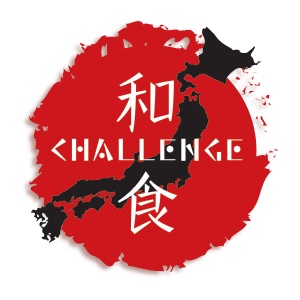
Foodies can’t afford not to eat Japanese food.
Today, not only sushi, but also ramen, wagyu beef, sake, and many other Japanese foods are recognized around the world, and the global trend in Japanese cuisine is no longer temporary. “UMAMI” has come to be used in Europe and the United States as one of the expressions of taste, as it is in Japanese. Today, Japanese exports to neighboring countries have surpassed numbers from before the outbreak of COVID-19, and the number of tourists has increased fourfold over the 10 years. It goes without saying that one of Japan’s roles in the world is to contribute to food culture.
Our mission
Currently, Tokyo Central, MARUKAI — is providing carefully selected products to everyone living in CA. Among them, we will introduce five ingredients below. We are confident that these ingredients will please the health-conscious residents of California who are highly interested to food culture.
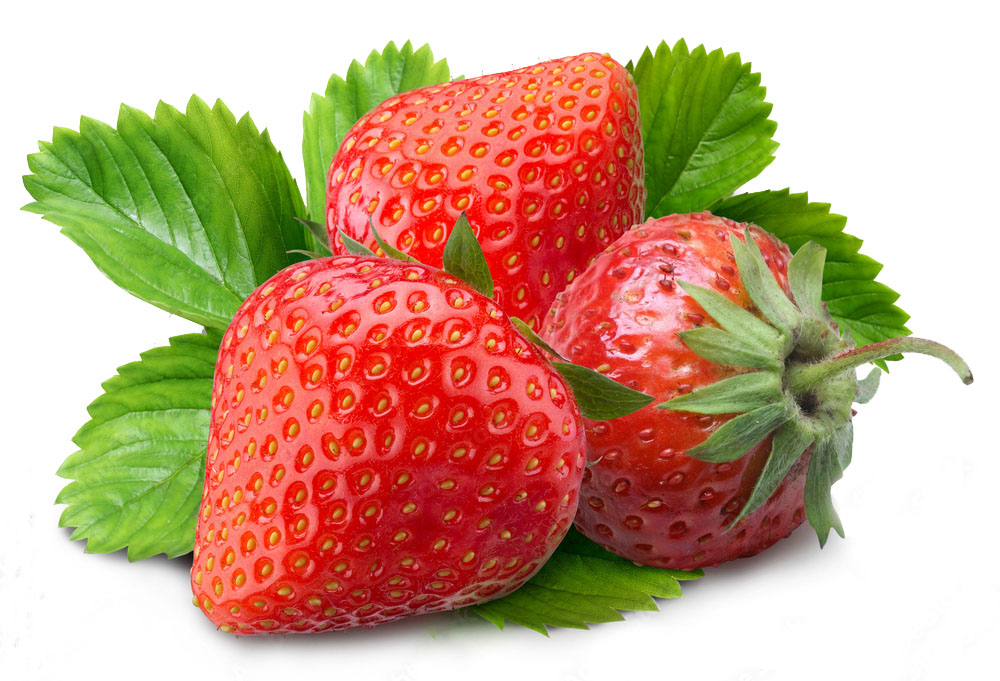
Strawberry
Strawberries are eaten all over the world, but Japan has the highest consumption of raw strawberries in the world. There are about 300 varieties of strawberries in Japan, and it is said that more than half of the varieties in the world are Japanese. Even now, breed improvements are repeated in various parts of Japan, and unique new breeds are being born one after another. Strawberries in Japan are characterized by their high water content and high sugar content. If you eat it as it is without adding anything, you will be able to know its sweetness. Strawberries are a must in a California salad. You can make a special salad with Japanese strawberries.
Melon
One of the more popular fruits in Japan, we can’t forget about melons.
Tourists from overseas who visit Japan for the first time seem to be surprised by the amazing flavor of Japanese melons. Several varieties are available in various parts of Japan, all of which have a high sugar content, and are often served raw as desserts at restaurants. This shows why we are confident in the quality and flavor of Japanese melon. Melons grown with care in a greenhouse are carefully managed as if they were raising a baby. Take a bite of a Japanese melon made by Japanese soil and clean water, it will be as sweet as gelato, a true sensation.
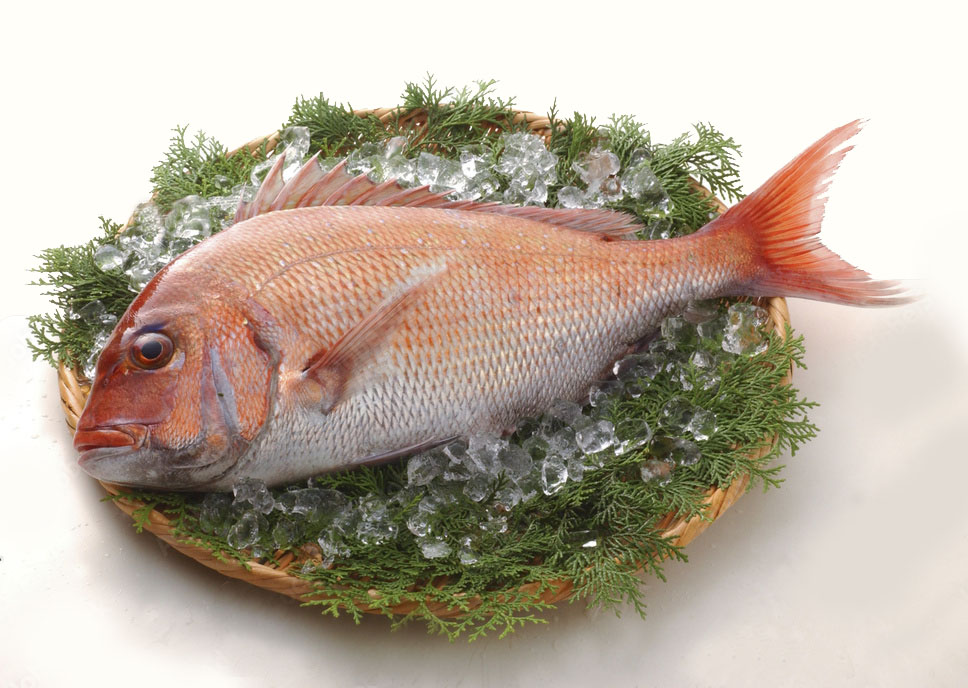
Tai(Snapper/Sea bream)
In Japan, snapper are generally recognized as a high-class and popular fish. They are often presented as a celebration dish because the red color is considered good luck. Also, snapper is called “TAI” in Japanese, and “congratulations” translates to OMEDE ”TAI”. Another reason why they are so popular, there are various cooking methods, whether raw, grilled, or boiled, you can enjoy the wonderful change of “UMAMI” that is unique to snapper. While tuna is considered the king of red fish, it is no exaggeration to say that “TAI” is the king of white fish.
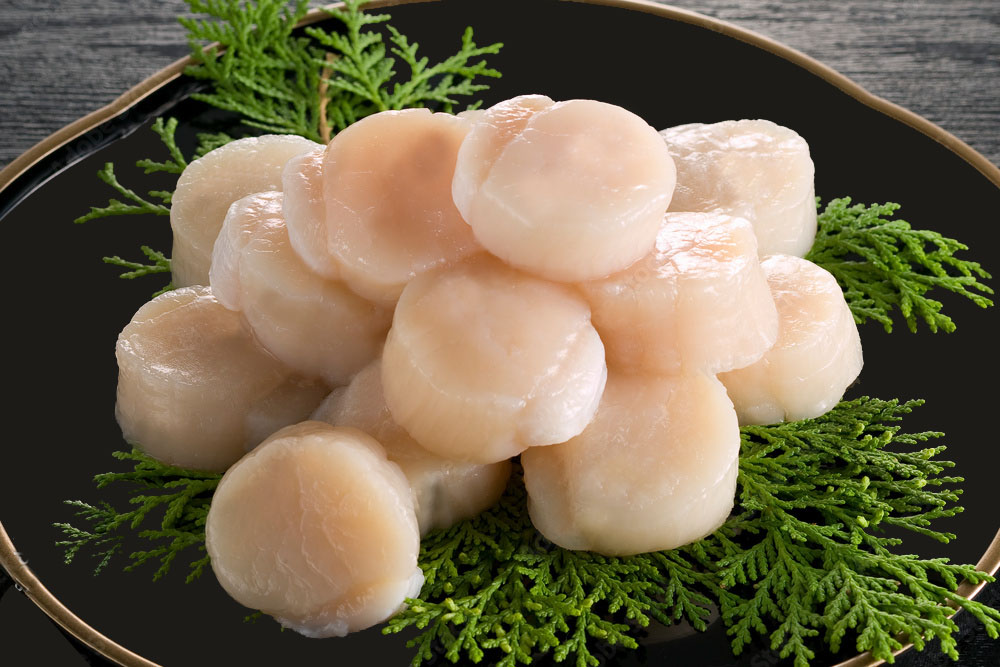
Scallops
Among the seafood produced in Japan, scallops are currently gaining the most popularity from around the world. Among agricultural, forestry and fishery products, scallops have been ranked #1 for four consecutive years. Shellfish like scallops are also farmed in South America and China, but Japanese scallops are highly regarded for their taste, size, and quality. The scallops’ adductor muscle, “kai-bashira”, are particularly popular, sold as individual parts after being dried or frozen.
Some say that scallops can swim 500 meters in one night. Adductor muscle, which is a mass of strong muscles, is composed of approximately 80% protein, excluding water. It also contains a lot of glutamic acid and glycine, which brings out the umami of scallops. Scallops are also rich in minerals such as iron, zinc, vitamins B1 and B2. In addition, they are high in taurine, a kind of amino acid used as the main ingredient of many energy drinks. With its high protein and low fat content, it is gaining more and more attention as a healthy ingredient. Unlike most other seafood, scallops don’t have the same fishy smell making them easy to apply to various dishes, so they are used in many traditional dishes around the world. In addition to enjoying scallops as sashimi, sushi, and grilled scallops in the shell, it can also be arranged as butter sauté, meuniere, gratin, or fried. Many health-minded California residents love scallops.
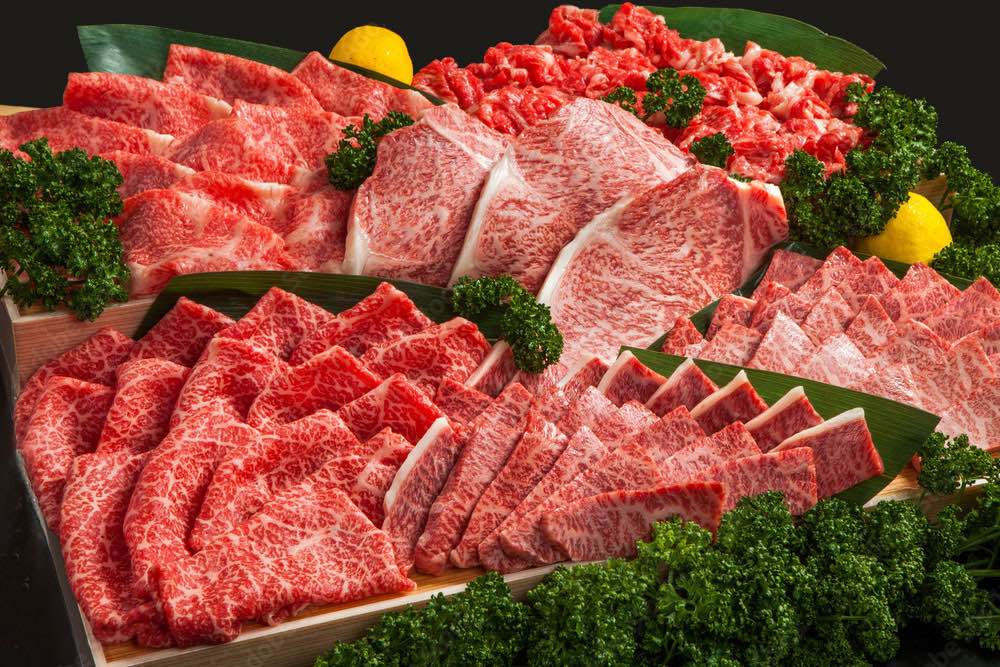
Wagyu Beef
Needless to say, “WAGYU BEEF” has become an indispensable ingredient when talking about world renowned Japanese food. There is so many great things to say about Wagyu beef, but above all, Japan takes beef traceability seriously, utilizing a certification system centrally managed by a government agency, where each cow has an individual identification number. As the popularity of Japanese Wagyu beef increases, the system of Wagyu beef produced under the world’s most stringent quality control system is an important certification process to maintain its quality. One of the characteristics of Wagyu beef, “SASHI”, is a perfect mixture of redness and fat, and its beautiful marble pattern is one of the characteristics of Wagyu beef. A simple steak, of course, is delicious but also boiled or steamed. Even when thinly sliced meat is combined with other ingredients, Wagyu’s unique “UMAMI” matches various ingredients, such as a simple soy sauce, another staple of Japanese food.
Who We Are…
Established in 1965, Marukai Corporation (d.b.a Tokyo Central) opened its business as one of the first international Japan-based retailers in the US market. Since its early days, Marukai has been striving to serve local customers by expanding to multiple retail locations.
Washoku Challange Event Going On Now!!
We, Tokyo Central and MARUKAI, have a mission to let as many CA residents know about these ingredients as possible. Not only to restaurants, but also for you to use these ingredients in your own kitchen. We hope that those already familiar with the wonderful ingredients of Japan, and those who have never tried them, will take this opportunity to enjoy these delicious Japanese foods at our event.
Tokyo Central, MARUKAI carefully selects production areas according to the season, and our motto is to deliver carefully selected products to everyone living in CA State at the perfect time. If you have never been there before, this taste of Japan may inspire your own Japanese adventure.
But first, please come and try. We believe that you will surely come to love Japan by discovering the wonders of Japanese products.
Location
TOKYO CENTRAL GARDENA
1740 Artesia Blvd., Gardena, CA 90248
TOKYO CENTRAL & MAIN PACIFIC
1620 W Redondo Beach Blvd.,
Gardena, CA 90247
TOKYO CENTRAL COSTA MESA
2975 Harbor Blvd., Costa Mesa, CA 92626
TOKYO CENTRAL WEST COVINA
1420 S Azusa Ave., West Covina, CA 91791
TOKYO CENTRAL YORBA LINDA
18171 Imperial Hwy. Yorba Linda, CA 92886
MARUKAI MARKET CUPERTINO
19750 Stevens Creek Blvd.,
Cupertino, CA 95014
MARUKAI LITTLE TOKYO
123 Astronaut Ellison S Onizuka St
#105, Los Angeles, CA 90012
MARUKAI MARKET SAN DIEGO
8151 Balboa Ave, San Diego, CA 92111
Tasting Event at TOKYO CENTRAL, MRUKAI
1/7/2023(SAT)West Covina Store/Mesa Store/Gardena Store 1/8/2023(SUN)West Covina Store/Mesa Store/Gardena Store
1/13/2023(FRI)Yorba Linda Store /Pacific Store 1/14/2023(SAT)Yorba Linda Store /Pacific Store 1/15/2023(SUN)Yorba Linda Store /Pacific Store
1/20/2023(FRI)West Covina Store/Mesa Store/Gardena Store 1/21/2023(SAT)West Covina Store/Mesa Store/Gardena Store 1/22/2023(SUN)West Covina Store/Mesa Store/Gardena Store
1/26/2023(THU)San Diego Store/Cupertino Store 1/27/2023(FRI)San Diego Store/Cupertino Store 1/28/2023(SAT)San Diego Store/Cupertino Store 1/29/2023(SUN)San Diego Store/Cupertino Store
2/3/2023(FRI)Yorba Linda Store /Pacific Store 2/4/2023(SAT)Yorba Linda Store /Pacific Store 2/5/2023(SUN)Yorba Linda Store /Pacific Store
2/10/2023(FRI)West Covina Store/Mesa Store/Gardena Store 2/11/2023(SAT)West Covina Store/Mesa Store/Gardena Store 2/12/2023(SUN)West Covina Store/Mesa Store/Gardena Store
2/20/2023(MON)San Diego Store/Cupertino Store 2/21/2023(TUE)San Diego Store/Cupertino Store 2/22/2023(WED)San Diego Store/Cupertino Store 2/23/2023(THU)San Diego Store/Cupertino Store
OPEN OHURS: Business hours differ depending on the store. West Covina Store/Mesa Store/Gardena Store/
Yorba Linda Store /Pacific Store/8am-9pm
San Diego Store 10am-8pm
Cupertino Store 9am-9pm
Advertising disclosure: We may receive compensation for some of the links in our stories. Thank you for supporting LA Weekly and our advertisers.
